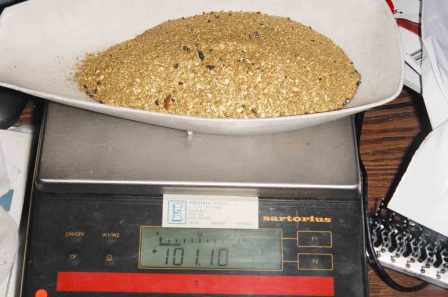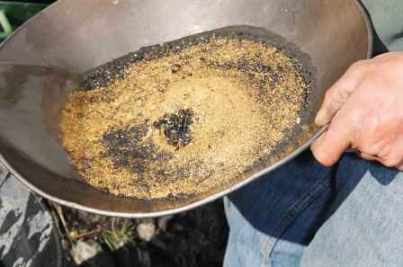| ENVIRONMENT
Removal
of Mercury and Lead
M Quest is committed to carrying out
environmentally-friendly operations. The results of our testing
programs last season proved to us that it is the right thing to do. Our MR System can recover toxic mercury and
lead while recovering precious metals. Our corporate pledge is to remove these contaminants once and for
all from mining sites. Any mercury that is recovered will be
stockpiled until our Phase Two smelter/refinery system comes online.
Lead is easy to
extract from gravel using gravity separation methods, so it is a
considerably simpler process than the removal of mercury.

In addition to
removing contaminants and using environmentally-friendly technology and
procedures in our mining activities, we
plan to remove all old, used
equipment and many other waste items that have been abandoned at
mining sites.

Testing
program
The amount of
both mercury and lead we recovered from our testing operation during
the 2003 season clearly indicates how
desperately our unique recovery services are needed in order to clean
up the rivers, streams, creeks and lakes—all waterways. The
unnatural toxins and contaminants that are present as a result of past
mining and other practices have caused environmental damage and must be
cleaned up.

The majority of the gold we recovered during the 2003 season
was either partially or totally coated by mercury (Hg) and there
was a significant amount of lead (Pb) bird shot in the cleanup as well.
In comparison to Burwash Creek, some creeks
have been polluted with even higher levels of lead in the form
of fishing weights, bullets and bird shot which was used for hunting
game birds.
Like
most creeks, Burwash Creek does not have a source of native mercury or
lead, therefore it is a contaminant
man has introduced during the first 50 years of mining on the creek.
These toxic metals continually discharge into the water from polluted
ground. The creek and river waters will remain contaminated and continue to
contaminate new areas indefinitely unless the pollutants are removed.
In the past,
miners would put mercury in the bottom riffle of their sluice boxes to
try and recover some of the fine gold they would lose otherwise. As the
pay-gravels and water ran over the mercury-filled bottom riffle, some
of the mercury would either splash out into the creek or adhere to the
rocks and sand or simply be discharged into the water. Mercury was used extensively in the past to
recover gold from both placer and hard rock mines; this explains
why mercury is a prevalent
contaminant in most, if not all, previously mined creeks, streams and
rivers and the waters they flow into. The respective
environmental agencies in both the USA and Canada have detailed
listings of these known toxic sites and waterways.
The
HTrustER Connection
The Heritage
Trust for Environmental Regeneration (HTrustER) is a not-for-profit federally chartered Canadian
Corporation. Its mission is to
regenerate human and natural environments in order to create a
sustainable environmental heritage for future generations. By
working together, M Quest and HTrustER can help each other to achieve
our respective goals.
Mutually
beneficial funding arrangement
M Quest offers a
Corporate Bond Program for HTrustER members exclusively to facilitate the development of new mining
technologies while also eliminating non-native harmful metals and other
contaminants, (i.e. mercury and lead) from land, water, air and
human environments.
For more on
HTrustER visit their web site at www.htrust.org
|
